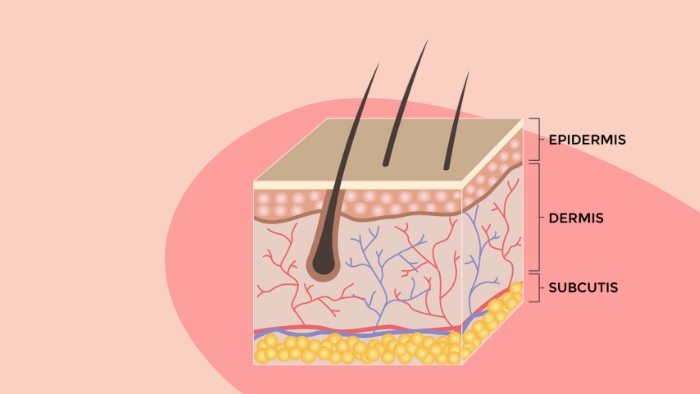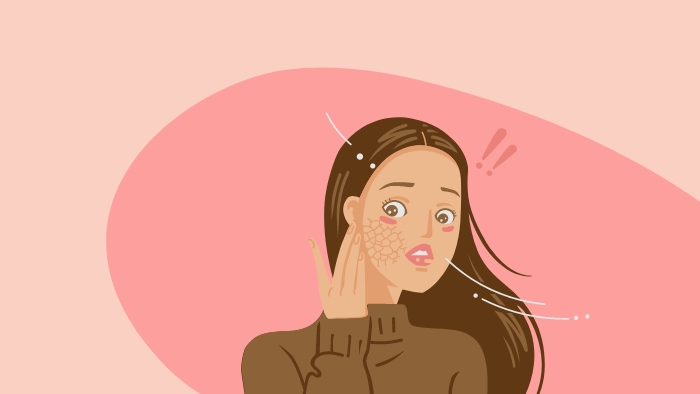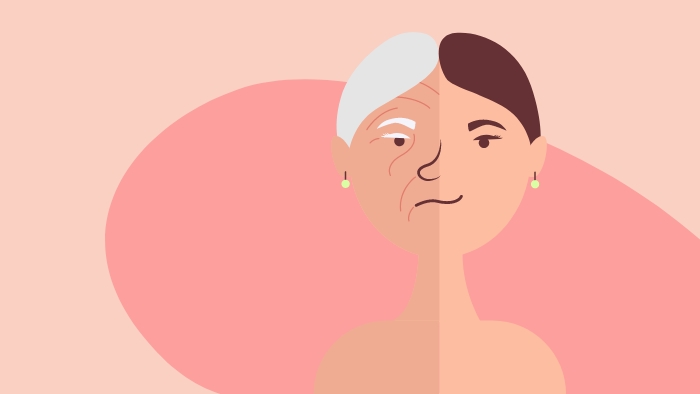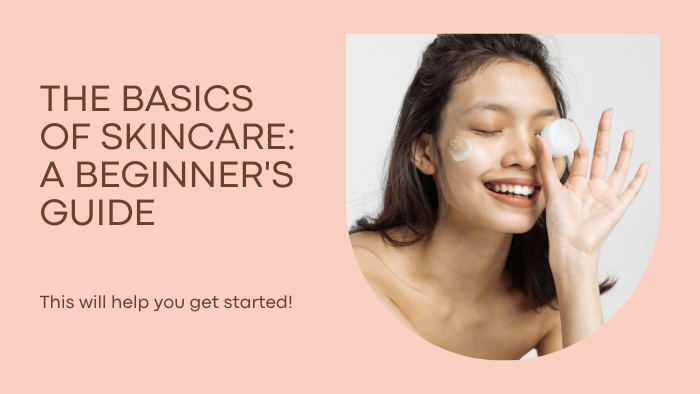Audrey Hepburn, one of the queens of classic cinema, once said, “Beauty is being comfortable in your own skin.”
As someone who has struggled with skincare in the past, I know how overwhelming it can be to go through the world of cleansers, toners, serums, and creams.
But I’ve come to realize that the key to achieving healthy, beautiful skin isn’t about using every product on the shelf – it’s about starting with the bare minimum and building a routine that works for you.
In this “skincare basics 101” guide, I’m going to talk about the basics of a simple yet effective tips that will help you get the best version of your skin.
Understand Your Skin
As someone who’s passionate about skincare, I believe it’s crucial to have a basic understanding of your skin. Otherwise, you won’t be able to take care of it properly, no matter how hard you try.
So let’s start by taking a closer look at the structure and function of the skin.
The structure and function of the skin
Our skin is the largest organ of our body and plays a vital role in protecting us from external factors like pollution and harmful UV rays. It’s made up of three main layers:

- Epidermis: outermost layer of the skin and serves as a barrier to prevent water loss and protect against environmental stressors.
- Dermis: The dermis is the second layer of the skin that lies beneath the epidermis. It contains blood vessels, hair follicles, sweat glands, and nerve endings. It provides support and nourishment to the epidermis, and also helps regulate body temperature.
- Subcutaneous tissue: also known as the hypodermis, is the layer of fat and connective tissue that lies beneath the dermis. It provides insulation, padding, and energy storage for the body. The subcutaneous tissue also contains blood vessels and nerve endings, and plays a role in regulating body temperature.
Importance of the skin barrier
The skin barrier, also known as the moisture barrier, is a crucial component of healthy skin. It’s responsible for maintaining the skin’s hydration levels, regulating its pH balance, and preventing the entry of harmful substances like bacteria and pollutants.

When the skin barrier is compromised, it can lead to issues like dryness, sensitivity, and inflammation. That’s why it’s important to use products that support and strengthen the skin barrier, like gentle cleansers, moisturizers, and sunscreen.
Skin types and conditions
Everyone’s skin is unique, but there are a few common skin types and conditions that we should be familiar with.
Skin Types
Understanding your skin type can help you choose products that are best suited for your needs. There are generally five main skin types:
- Normal Skin: This skin type is well-balanced, neither too oily nor too dry, and has a smooth texture with small pores.
- Dry Skin: This skin type tends to be rough, itchy, and flaky, and can feel tight and uncomfortable. It often has a dull appearance and fine lines, and wrinkles may be more visible.
- Oily Skin: This skin type has an excess production of sebum, leading to a shiny appearance and often visible pores. It is prone to developing acne and breakouts.
- Combination Skin: This skin type has a mixture of both dry and oily areas, with oilier areas typically being in the T-zone (forehead, nose, and chin).
- Sensitive Skin: This skin type is easily irritated, often resulting in redness, itchiness, or a burning sensation. It may react negatively to certain skincare products, harsh weather conditions, or even stress.
Skin conditions
There are many skin conditions that can affect the skim. However, these 5 are the most common:
- Acne: This is a common skin condition that occurs when hair follicles become clogged with oil and dead skin cells. It typically results in pimples, blackheads, and whiteheads on the face, chest, and back.
- Eczema: Eczema is a chronic condition that causes the skin to become red, itchy, and inflamed. It can occur anywhere on the body, but is most common on the hands, feet, arms, and behind the knees.
- Psoriasis: Psoriasis is a chronic autoimmune condition that causes cells to build up rapidly on the surface of the skin, resulting in thick, scaly patches that can be itchy and painful. It often occurs on the elbows, knees, scalp, and lower back.
- Rosacea: Rosacea is a chronic condition that causes redness, flushing, and acne-like bumps on the face. It often occurs on the cheeks, nose, chin, and forehead.
- Dermatitis: Dermatitis is a term used to describe a variety of skin conditions that cause inflammation and irritation. It can be caused by a number of factors, including allergens, irritants, and genetic predisposition. Symptoms can include redness, itching, and rash-like bumps on the skin.
Learn about most popular skincare ingredients
Retinol: a form of vitamin A that promotes skin cell turnover, reduces fine lines and wrinkles, and helps unclog pores.
Hyaluronic acid: a humectant that hydrates and plumps the skin by attracting and holding onto moisture.
Vitamin C: an antioxidant that brightens and evens out the skin tone, and also protects the skin from environmental damage.
Salicylic acid: a beta hydroxy acid that exfoliates and unclogs pores, making it effective for treating acne-prone skin.
Niacinamide: a form of vitamin B3 that improves the skin’s barrier function, reduces inflammation, and helps fade hyperpigmentation.
Choose products with the right ingredients for your skin type and concerns
Choosing products with the right ingredients can be overwhelming as there are a lot of products available in the market. I feel you, when I started out I was just like this.

You don’t have to look into everything, just remember this:
If you have dry skin, you may want to look for products with hyaluronic acid or glycerin to hydrate and plump the skin.
If you have oily or acne-prone skin, you may want to look for products with salicylic acid or benzoyl peroxide to help clear up blemishes.
It’s also important to consider any specific concerns you have, such as hyperpigmentation or fine lines, and look for ingredients like vitamin C or retinol that can target those concerns.
When in doubt, consult with a dermatologist or skin care professional for personalized recommendations. Although it might cost you more than researching on Google, trust me you’ll never regret seeing a professional.
Taking care of your skin involves more than just applying products. It’s important to understand your skin’s pH and the role of emollients in your skincare routine. Here’s what you need to know:
Educate yourself with terms like skin pH and emollients
Your skin’s pH is a measure of how acidic or alkaline it is on a scale of 0 to 14. The ideal pH for skin is slightly acidic, around 5.5. This pH helps maintain the skin’s barrier function and prevents the growth of harmful bacteria.
Using products that are too alkaline can disrupt the skin’s pH and lead to dryness, irritation, and even acne.
The role of emollients in skin care
Emollients are ingredients that help soften and smooth the skin. They work by creating a barrier on the skin’s surface to trap moisture and prevent water loss. Emollients are especially important for people with dry or sensitive skin, as they can soothe and protect the skin.
Ingredients that balance your skin’s pH and provide emollient benefits
To choose products that balance your skin’s pH and provide emollient benefits, look for ingredients like ceramides, fatty acids, and cholesterol. These ingredients strengthen the skin’s barrier function and improve moisture retention.
Avoid products that contain harsh soaps or sulfates, as they can strip the skin of its natural oils and disrupt the skin’s pH.
What if you have sensitive skin?
If you’re unsure whether or not you have sensitive skin, there are a few signs to look out for. These include:
- Redness or irritation after using certain products
- Itching or burning sensation when using certain products
- Dryness, flakiness, or rough patches on the skin
- Breakouts or rashes after exposure to certain environmental factors
If you experience any of these symptoms regularly, you may have sensitive skin. It’s important to understand your skin’s needs and limitations in order to choose the right products and avoid common triggers that can exacerbate sensitivity.
Recommended products for sensitive skin
When it comes to selecting skincare products for sensitive skin, it’s important to look for gentle, non-irritating formulas that are free of common irritants like fragrances, dyes, and alcohol. Some recommended products for sensitive skin include:
Cleansers: Look for mild, non-foaming cleansers that won’t strip the skin of its natural oils.
Moisturizers: Choose gentle, fragrance-free moisturizers that are specifically formulated for sensitive skin.
Sunscreen: Look for mineral-based sunscreens that contain zinc oxide or titanium dioxide, as these are less likely to cause irritation.
Common Triggers for Sensitive Skin and How to Avoid Them
Some common triggers for sensitive skin include harsh skincare products, environmental factors like pollution and weather changes, and certain foods or medications. To avoid these triggers, try to:
- Stick to gentle, fragrance-free skincare products
- Protect your skin from environmental stressors with a broad-brimmed hat or protective clothing
- Avoid hot showers or baths, and opt for lukewarm water instead
- Choose non-irritating laundry detergents and avoid using fabric softeners
Pore, Follicle, and Pigmentation Conditions
If you’ve struggled with clogged pores, acne, or uneven skin tone, you may be dealing with pore, follicle, or pigmentation conditions. Here’s what you need to know about these common skin concerns:
Conditions related to pores, follicles, and pigmentation
Pores are the small openings on the surface of the skin that allow oil and sweat to escape. When they become clogged with oil, dead skin cells, and other debris, they can lead to blackheads, whiteheads, and other types of acne.
Follicles are the tiny sacs in the skin that contain hair roots. Let me tell you something interesting, do you know inflammation of the follicles can cause folliculitis, a condition that can result in small, red bumps on the skin? Yes, this is something most people have experienced. I know you must have seen this either on your skin or someone else’s.
Now if we talk about pigmentation, I can say it refers to the color of the skin, which is determined by melanin production. Uneven pigmentation can occur due to sun damage, hormonal changes, and other factors.
Treatment for these conditions
There are a variety of treatments available for pore, follicle, and pigmentation conditions. Some common options include:
Topical treatments: Products containing ingredients like salicylic acid, benzoyl peroxide, and retinoids can help clear pores and reduce inflammation. Skin lightening agents like hydroquinone and kojic acid can help even out pigmentation.
In-office treatments: Procedures like chemical peels, microdermabrasion, and laser therapy can be effective in treating more severe cases of acne and pigmentation issues.
Lifestyle changes: Maintaining a healthy skincare routine and avoiding triggers like excessive sun exposure can also help improve the appearance of pores, follicles, and pigmentation.
Recommended ingredients for treating pore, follicle, and pigmentation
When it comes to choosing products for pore, follicle, and pigmentation conditions, these ingredients target your specific concerns:
Salicylic acid: A beta-hydroxy acid that can penetrate pores and help clear out debris, reducing the appearance of blackheads and whiteheads.
Retinoids: A derivative of vitamin A that can increase cell turnover and help prevent the formation of new acne.
Hydroquinone: A skin lightening agent that can help reduce the appearance of dark spots and hyperpigmentation.
The aging process: Everyone will face it!

Aging is a natural process that affects everyone, but its effects on the skin can be particularly noticeable. Here’s what you need to know about the aging process and how to keep your skin looking its best:
Aging process and its effects on the skin
As we age, the skin naturally loses collagen and elastin, two proteins that help keep it firm and elastic. This can lead to wrinkles, sagging, and other signs of aging. The skin may also become thinner and more fragile, making it more prone to damage and dryness.
Here’s what you can do to prevent premature aging
While we can’t stop the aging process, there are steps we can take to slow it down and prevent premature aging. Some key strategies include:
Sun protection: The sun is one of the biggest culprits when it comes to premature aging. Make sure to wear sunscreen every day and avoid excessive sun exposure.
Healthy lifestyle: Maintaining a healthy diet and staying hydrated can help keep the skin looking its best. Avoiding smoking and excessive alcohol consumption can also help prevent premature aging.
Skincare routine: Regular use of anti-aging products can help keep the skin looking youthful. Look for products containing ingredients like vitamin C, retinol, and peptides.
Ingredients you should look for in anti-aging products
Before you buy your next anti-aging skin cream or moisturizer, I’d suggest you to look for these ingredients:
Retinoids: Retinoids, such as retinol and tretinoin, are powerful anti-aging ingredients that help reduce the appearance of fine lines, wrinkles, and hyperpigmentation. They also help improve skin texture and tone.
Vitamin C: Vitamin C is a potent antioxidant that helps protect the skin from environmental stressors, such as pollution and UV radiation. It also helps brighten the skin and improve skin texture.
Peptides: Peptides are amino acids that help stimulate collagen production, which helps improve skin elasticity and firmness. They also help reduce the appearance of fine lines and wrinkles.
Hyaluronic Acid: Hyaluronic acid is a hydrating ingredient that helps plump and moisturize the skin. It also helps improve the appearance of fine lines and wrinkles.
Alpha-hydroxy acids (AHAs): AHAs, such as glycolic acid and lactic acid, help exfoliate the skin and improve skin texture. They also help reduce the appearance of fine lines, wrinkles, and hyperpigmentation.
Final Thoughts!
If you’re new to skin care, I totally get it – there are so many products out there, it can be overwhelming. But taking care of your skin is super important, and it’s never too late to start a routine.
So here are 4 tips that might help you get started:
- First things first, identify your skin type. Is it dry, oily, combination, or sensitive? This will help you choose the right products for your skin. If you’re not sure, try doing a simple patch test to see how your skin reacts to different products.
- Next, keep it simple. You don’t need a 10-step routine to have healthy skin. Start with a basic routine of cleanser, moisturizer, and sunscreen. Make sure to choose products that are gentle and suited for your skin type.
- Remember, consistency is key. It’s important to use your products regularly to see results. And don’t be discouraged if it takes some time to find the right products for you – everyone’s skin is different.
- Finally, don’t forget to take care of your skin from the inside out. Drink plenty of water, eat a healthy diet, and get enough sleep. All of these things can help improve the overall health and appearance of your skin.
I hope these tips help you get started on your skin care journey! Remember, taking care of your skin is an act of self-care, and you deserve to feel confident and comfortable in your own skin. Let me know what you think 🙂


